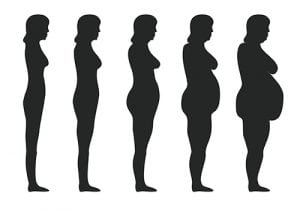
Review your surgery options with your doctor to determine the best choice for you.
Obesity surgery is a medical option that can help you to lose weight if you have not had any success with changing your diet and increasing your physical activity level. As part of a medical program, obesity or weight-loss surgery helps you to lose the excess weight and reduce your risk of other medical conditions that are associated with being too heavy, such as type 2 diabetes and heart disease. There are several different types of obesity surgery options, depending on:
- How much weight you need to lose
- What your surgeon recommends for your particular situation
How Obesity Surgery Contributes to Weight Loss
There are two main ways in which obesity surgery options can help you to lose weight. The first way is that the surgery physically limits how much food or beverage your stomach can hold. This in turn limits the number of calories that you can take in during a meal or a snack. All of the obesity surgeries include restriction.
Malabsorption is the second way that obesity surgeries contribute to weight loss. Some of the surgeries shorten or bypass part of your small intestine, which causes your body to absorb less of the calories and nutrients from the food that you eat. Part of the preparation and follow-up for obesity surgery includes nutritional counseling and physical fitness. These two activities also contribute to weight loss and maintaining your goal weight once you reach it.
Roux-en-Y Gastric Bypass
 One type of weight loss surgery is the roux-en-Y gastric bypass. In this procedure, the surgeon makes a small pouch out of the upper part of your stomach. The pouch is the only part of your stomach that will hold food. Your small intestine is then cut underneath the main portion of your stomach and part of it is rerouted to the new pouch. The bigger part of the stomach still makes digestive enzymes, which drain into the other part of your small intestine. Food bypasses this part and does not come into contact with as many of the digestive enzymes. As a result of the two parts of this surgery, you eat less food and absorb less of the nutrients and calories from it.
One type of weight loss surgery is the roux-en-Y gastric bypass. In this procedure, the surgeon makes a small pouch out of the upper part of your stomach. The pouch is the only part of your stomach that will hold food. Your small intestine is then cut underneath the main portion of your stomach and part of it is rerouted to the new pouch. The bigger part of the stomach still makes digestive enzymes, which drain into the other part of your small intestine. Food bypasses this part and does not come into contact with as many of the digestive enzymes. As a result of the two parts of this surgery, you eat less food and absorb less of the nutrients and calories from it.
Laparoscopic Adjustable Gastric Banding
In the laparoscopic adjustable gastric banding (“lap band”) procedure for weight loss, the surgeon makes two to five incisions into your abdomen and inserts a small camera. The camera transmits video to a screen in the operating room so that the doctor can see your abdominal organs. Using small surgical instruments, a thin, flexible silicon and rubber band containing an inflatable balloon is placed around the upper section of your stomach and secured in place. This band creates a small stomach pouch that has a narrow opening to the main portion of your stomach. The surgeon then places a port underneath your abdominal skin. A thin, flexible tube connects the port and band. To adjust the band, the surgeon adds or takes away saline solution through the port. The liquid inflates the balloon, constricting or widening the opening to the main stomach. This surgery restricts how much you can eat but does not cause malabsorption of the food.
Sleeve Gastrectomy
In a sleeve gastrectomy, the majority of your stomach is surgically separated and removed from your body. In this surgical procedure, the remaining section of your stomach is reshaped into a long, thin tube. This tube resembles the shape of a banana and can only hold a few ounces of food. The reshaped stomach also releases less appetite-stimulating hormones, which reduces your desire to eat. Sleeve gastrectomy does not affect the absorption of calories and nutrients in the intestines.
Biliopancreatic Diversion With Duodenal Switch
 The first part of a biliopancreatic diversion with duodenal switch surgery for obesity is the same as the sleeve gastrectomy. The sphincter that empties food into your small intestine is left in place, as is the first section of the small intestine. This section is called the duodenum. The middle part of your intestine is closed off and then the last section is attached to the duodenum, which is the switch part of the surgery. The middle section is reattached to the end of the intestines, which lets the bile and pancreatic enzymes flow into it. This is the diversion portion of the surgery. The rerouting and diversion causes the food you eat to bypass the majority of your small intestine. This results in less absorption of nutrients and calories from your food.
The first part of a biliopancreatic diversion with duodenal switch surgery for obesity is the same as the sleeve gastrectomy. The sphincter that empties food into your small intestine is left in place, as is the first section of the small intestine. This section is called the duodenum. The middle part of your intestine is closed off and then the last section is attached to the duodenum, which is the switch part of the surgery. The middle section is reattached to the end of the intestines, which lets the bile and pancreatic enzymes flow into it. This is the diversion portion of the surgery. The rerouting and diversion causes the food you eat to bypass the majority of your small intestine. This results in less absorption of nutrients and calories from your food.
To learn more about your obesity surgery options, contact us today.

